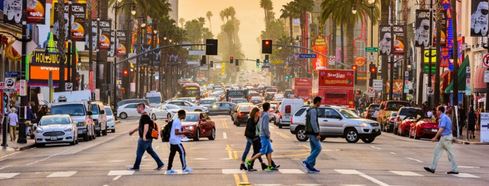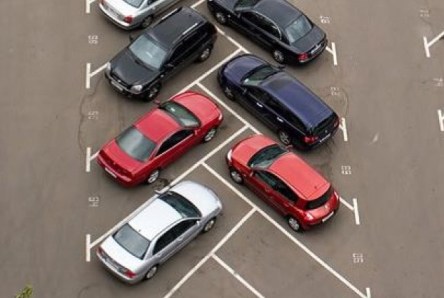Though parking lots are a necessary evil for many cities, surrendering space to automobiles places an undue burden on housing and urban development. On boulevards and avenues across the country, cars circle in an endless cycle, seeking the perfect parking spot and clogging city streets with noise, pollution and traffic. All the while, the space set aside for automobiles wreaks havoc on urban housing. In many cities, developers must provide adequate off-street parking options for any new construction, which ultimately undermines affordable housing initiatives. But what if there was a better way? Last month, the White House released its Housing Development Toolkit. A summary of suggested policy adjustments, the toolkit includes a number of suggestions aimed at helping cities increase affordable housing inventory. The toolkit’s recommendations cover tax adjustments, changes to local zoning laws, and the reduction or elimination of off-street parking requirements. “Parking requirements generally impose an undue burden on housing development, particularly for transit-oriented or affordable housing,” states the report. “By reducing parking and designing more connected, walkable developments, cities can reduce pollution, traffic congestion and improve economic development.” Killing the Commute In the 50s and 60s, the mass exodus to the suburbs was seen as a sign of progress. As incomes rose, families ditched apartment living for open spaces, big backyards, and longer commutes. Over the years, the distance between work and home has grown. These days, many Americans spend several hours a day locked in their vehicles traveling to and from the office. While once economic success once spurred urban flight, high rents and few options are behind today’s workforce relocation. With inflation rising and salaries stagnant, many workers find themselves priced out of their neighborhoods. Ironically, it’s often regulations on parking and transportation that end up adversely affecting affordable housing stock. As the toolkit explains, “These requirements have a disproportionate impact on housing for low-income households because these families tend to own fewer vehicles but are nonetheless burdened by the extra costs of parking’s inclusion in the development.” Low Rents and Bigger Inventories As the toolkit points out, many cities, including Denver, New York, and Minneapolis have already experienced positive results after reducing or eliminating minimum parking regulations. In Seattle, decreasing minimal parking requirements in the city center resulted in “a wave of new development, including hundreds of units with now associated parking spaces.” Even more, eye-opening, a study on Seattle’s decision corroborated the connection between minimum parking requirements and housing costs. In fact, not only did the requirements reduce the number of total units available, they often triggered 50% higher rents. No More Wasted Space With vacancies at a premium, it makes little sense to set aside large swaths of vacant property for the storage of cars often used just a few hours a day. In addition, vehicles in motion are equally nefarious. A study by UCLA urban planner Donald Shoup estimated vehicles cruising around a 15-block stretch of Los Angeles released 730 tons of carbon dioxide annually while also gulping down 47,000 gallons of gas. Apply those numbers nationally, and you can see why it makes good environmental and economic sense to not only move cars off the road but also eliminate the total number of private automobiles in urban environments. There will always be the stubborn holdouts who will cling to their steering wheels with steely determination. For most city dwellers, though, a functioning – and functional – public transportation infrastructure can make car ownership obsolete. Fewer cars ultimately mean fewer parking spots, freeing up all that square footage for housing, including affordable developments. In other words, for proponents of affordable housing, reducing or eliminating parking requirements is a win-win. “Minimum parking requirements [are] the most noted barrier to housing development,” states the Toolkit. “By reducing parking and designing more connected, walkable developments, cities can reduce pollution, traffic congestion and improve economic...
Parking ROI
Creative Parking Solutions
For most of us, parking is little more than a necessary evil. If we could, we’d use the parking space for more units and enjoy the additional cash flow. But what if your parking lot could become an asset? From practical to extravagant, these creative parking solutions can transform a requirement into a revenue-generating tool. Creative Parking In metropolitan areas, the ability to offer multiple parking spaces per household may give you an advantage over the competition. Get the most out of your available space by ditching the traditional parking scheme for one that is growing in popularity in the UK. The layout above permits narrower rows thus potentially more rows for your site. Automated Parking Urban luxury properties may consider electronic self-parking. The featured automated parking tower above is for a Volkswagen plant but add in a “valet” for the electronic system and you’ve tapped into a marketing feature. (Robotic Carpark in Dubai shows a non-commercial application.) It only takes 15 seconds to park or retrieve a vehicle. While the space savings is significant and the amount of parking you can offer tenants is appealing, the bragging rights may be a tower’s greatest appeal. Commuter Options Shuttle may be an excellent asset for suburban rental communities. When you can’t offer residents direct access to public transit, a shuttle to and from the nearest station can be even better. Residents gain access to affordable transportation into the city without concern for weather conditions, paid parking at the station, or parking security. Before implementing a plan, a quick survey from the community may help you determine the cost structure and travel times that will be most successful. Added Amenities Adding amenities to parking areas is another way to generate revenue. Traditionally, this has...


